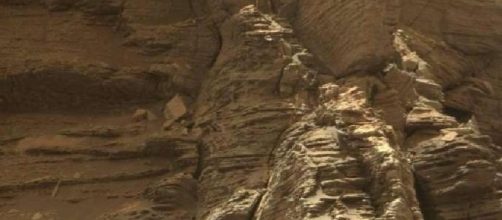NASA´s Curiosity rover captured images of a rocky region in the lower part of Mount Sharp. The rover utilized its MastCam to obtain outstanding pictures of this layered area known as Murray Buttes, which is situated in the lower part of the mountain, the layered rocky region is believed to hold the Martian evolutionary past and this along with samples of rock will soon reveal new discoveries of Mars geologic past.
MastCam images
Curiosity took several images of the Murray Buttes region with its Mast Camera (MastCam), which forms part of the scientific equipment on board the rover.This piece of equipment was designed to capture color images and video of the Martian surface features.
These images can later be assembled together to create panoramic views of the landscape surrounding the rover. The design of the MastCam installed on curiosity consists of two camera systems mounted on a mast and extending outwards from the rover´s mechanical body. The systems of cameras will be used to map the Martian landscape, including rocks and soils and to observe the frost and weather changes on the planet. It will also aid at viewing the sampling and driving paths of the rover.
Murray Buttes
The region of the Murray Buttes consists of the eroded remnants of very ancient sandstone that had its origin when the Martian winds deposited sand a little after the formation of Mount Sharp. Scientists think that the study of these rock formations will give them a better understanding of the ancient formations of sand dunes in the region that were buried and overtime changed chemically by groundwater flows.
With the past of time, these rocky features were unearthed and underwent erosion to turn into the natural topography that characterizes it in the present.
The Buttes area revealed a terrain filled with finely layered sand rocks, which were carried by the Martian wind in very ancient times and were deposited, forming the landscape of a rocky desert. These would be the last images taken by curiosity before it reaches the final boundaries of the Buttes region. Curiosity performed some drilling in this area and after the last drilling is completed, it will maintain a route further south and up Mount Sharp to totally leave this interesting region.
Mission
Curiosity has been studying Mars since 2012 and has discovered that ancient Mars once had the right conditions for microbes to thrive.
On the region of Mount Sharp, the rover is studying how the once habitable planet could have evolved into a dry and inhospitable one for the development of life today.Mars´ exploration will help scientists obtain a better understanding of the evolution of the planet and the processes of its atmosphere and surface that have changed the red planet.

